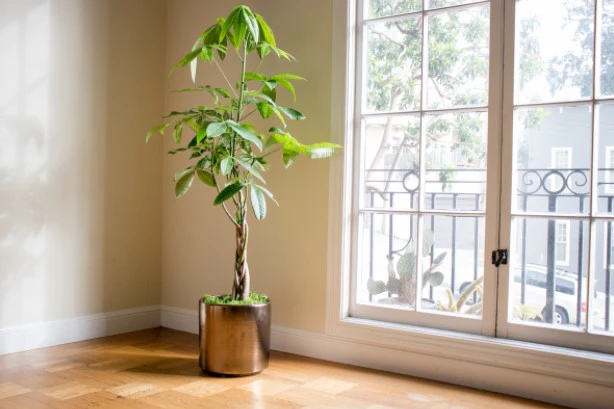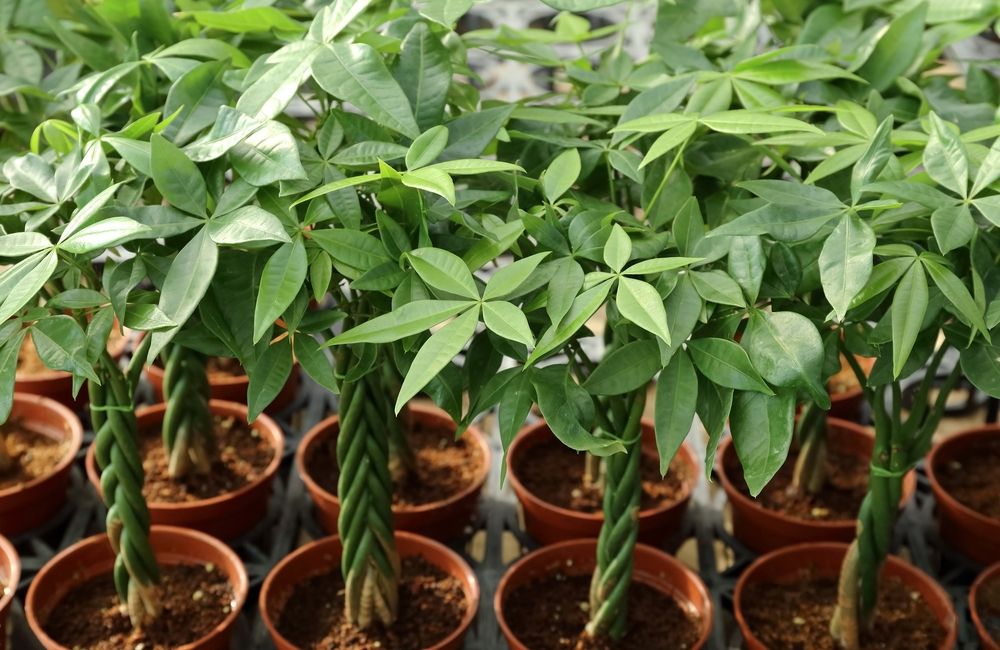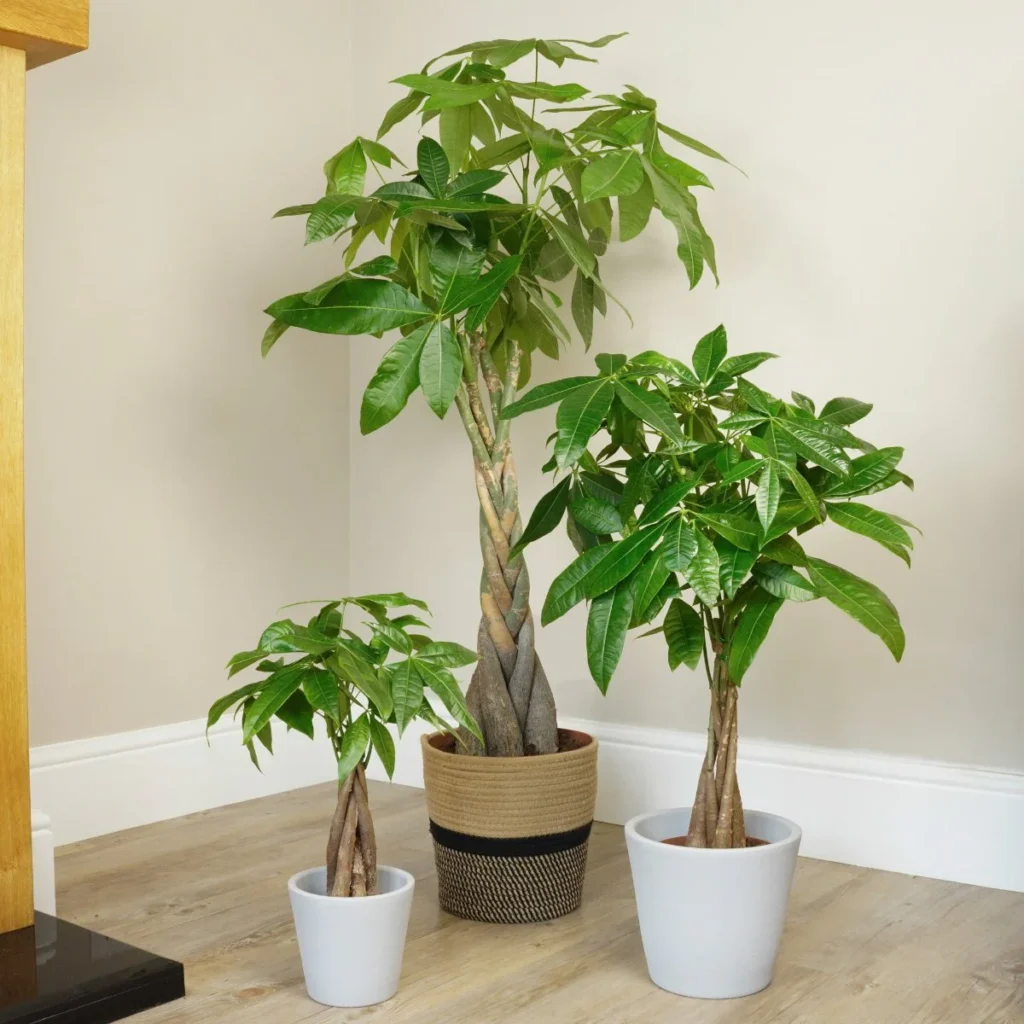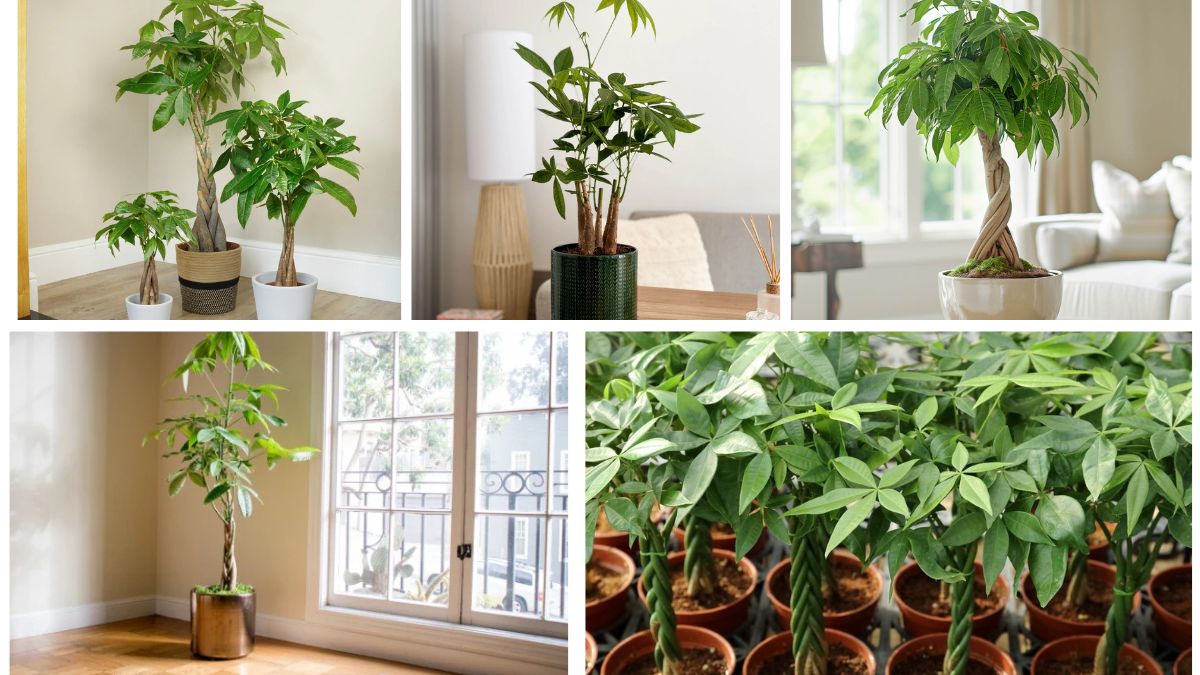The money tree plant (Pachira aquatica) has become one of the most popular indoor plants worldwide—not only for its beauty but also for the belief that it brings good luck, wealth, and prosperity to households. With its braided trunk, lush green leaves, and symbolic connection to positive energy in Feng Shui, the money tree is often placed in homes and offices as a living charm for financial growth and harmony.
Beyond symbolism, the money tree is also admired for being hardy, low-maintenance, and adaptable to different living conditions, making it an excellent choice for both beginner and seasoned plant enthusiasts. To ensure your plant thrives and continues to attract positivity, you need to understand its growing needs and care routine.
This guide provides step-by-step money tree care tips so you can keep your plant healthy while maximizing its symbolic power for luck and prosperity at home.
Introduction to the Money Tree Plant

The money tree, native to Central and South America, thrives naturally in wetlands and swampy regions. In the 1980s, it gained popularity in Asia, especially in Taiwan and China, where it became tied to Feng Shui traditions. The braided trunk—a common feature in cultivated money trees—was said to “lock in” wealth and prosperity.
Botanically, the plant belongs to the Malvaceae family and can grow up to 60 feet tall outdoors, but when cultivated indoors in containers, it typically grows between 3–6 feet. Its glossy green leaves grow in clusters of five, and according to legend, a stalk with seven leaves is considered especially lucky.
Step 1: Choosing and Placing Your Money Tree
1. Selecting a Healthy Plant
When buying a money tree, choose one with:
- Bright, healthy green leaves (no yellowing or brown spots).
- Firm, braided trunk without signs of mold or damage.
- Moist but not soggy soil.
2. Best Placement for Prosperity
In Feng Shui, the placement of your money tree affects the kind of energy it attracts:
- Southeast corner of your home – Associated with wealth and abundance.
- East area – Encourages health and family harmony.
- Office desk or workspace – Attracts financial opportunities.
Avoid placing the plant in bathrooms or cluttered spaces, as it may reduce its positive energy.
Step 2: Light Requirements

Money trees thrive in bright, indirect light. They naturally grow under the canopy of taller trees, so direct sun can scorch their leaves.
- Ideal Placement – Near a window with filtered light or behind sheer curtains.
- Indoor Care – Rotate the plant every few weeks to ensure even growth.
- Low-Light Conditions – They can survive in medium to low light but may grow slower.
Tip: If natural light is limited, consider using a grow light to supplement.
Step 3: Watering the Money Tree
Overwatering is the most common mistake beginners make.
- Watering Rule – Water only when the top 2–3 inches of soil feel dry.
- Method – Water thoroughly until it drains out of the bottom, then empty the saucer to prevent root rot.
- Frequency – Usually every 7–10 days, but adjust depending on season and humidity.
Signs of improper watering:
- Yellow leaves → Overwatering.
- Crispy, brown leaf edges → Underwatering.
Step 4: Soil and Repotting
Soil Choice
Money trees need well-draining soil to prevent root rot.
- Use a peat moss-based potting mix combined with sand or perlite.
- A cactus or succulent mix also works well.
Repotting
- Repot every 2–3 years or when roots start circling the pot.
- Choose a pot 1–2 inches larger with drainage holes.
- Spring is the best season for repotting, as the plant enters an active growth phase.
Step 5: Temperature and Humidity

Being a tropical plant, the money tree thrives in warm, humid environments.
- Temperature Range: 65–85°F (18–29°C).
- Avoid Cold Drafts: Keep away from air conditioners or heaters.
- Humidity Needs: Prefers 50%+ humidity.
If your home is dry, try:
- Grouping plants together.
- Placing the pot on a pebble tray with water.
- Using a humidifier nearby.
Step 6: Fertilizing the Money Tree
Regular feeding supports healthy growth.
- Type – Use a balanced liquid fertilizer (10-10-10) diluted to half-strength.
- Frequency – Once a month during the growing season (spring and summer).
- Winter Care – Stop fertilizing in winter when the plant’s growth slows.
For organic options, compost tea or fish emulsion can provide nutrients naturally.
Step 7: Pruning and Braiding
Pruning
- Trim yellow or dead leaves to encourage new growth.
- Cut back leggy branches to maintain shape and encourage fuller growth.
Braiding
Many money trees are sold with braided trunks. You can continue braiding young, flexible stems as the plant grows. Simply weave them together gently and secure them loosely with a soft tie until they harden in place.
Step 8: Common Problems and Solutions
Even with proper care, money trees may face issues:
- Yellowing Leaves – Overwatering; adjust watering schedule.
- Brown Leaf Tips – Low humidity or underwatering.
- Drooping Leaves – Too much water or sudden temperature changes.
- Pests (Spider Mites, Mealybugs, Aphids) – Wipe leaves with neem oil or insecticidal soap.
Regularly inspecting your plant helps catch issues early.
Step 9: Propagating Your Money Tree
Money trees can be propagated by stem cuttings:
- Cut a healthy stem 6–8 inches long with a few leaves.
- Place the cutting in water or moist soil.
- Keep in indirect light until roots develop.
This method allows you to grow new money trees to gift or place in other areas of your home for extra luck.
Symbolism and Feng Shui Benefits

The money tree is not just a plant—it’s a living symbol of prosperity.
- Braided Trunk – Said to “trap” fortune within the folds.
- Five Leaves per Stem – Represents the five Feng Shui elements: wood, water, earth, metal, and fire.
- Placement in Home/Office – Attracts wealth, reduces stress, and encourages positive energy flow.
- Gifting Tradition – Often given during housewarmings, business openings, or New Year celebrations as a wish for prosperity.
Some households even place red ribbons or gold coins on the money tree to amplify its lucky energy.
Benefits Beyond Symbolism
Besides luck and prosperity, money trees also offer practical benefits:
- Air Purification – Removes toxins like formaldehyde and benzene from indoor air.
- Stress Reduction – The lush green foliage promotes relaxation and positivity.
- Low-Maintenance – Ideal for busy homeowners or office spaces.
- Educational Value – A fun plant to grow, braid, and propagate.
Conclusion
Caring for a money tree plant is not just about nurturing greenery—it’s about cultivating a symbol of prosperity, balance, and harmony within your home. By following simple steps—providing bright indirect light, watering wisely, maintaining humidity, pruning when needed, and placing it in the right location—you can keep your plant thriving for years.
As the money tree grows, so too may your sense of abundance, peace, and positivity. Whether you believe in Feng Shui or simply love its unique look, the money tree is a reminder that growth takes patience and care, and prosperity blossoms when we nurture it consistently.





